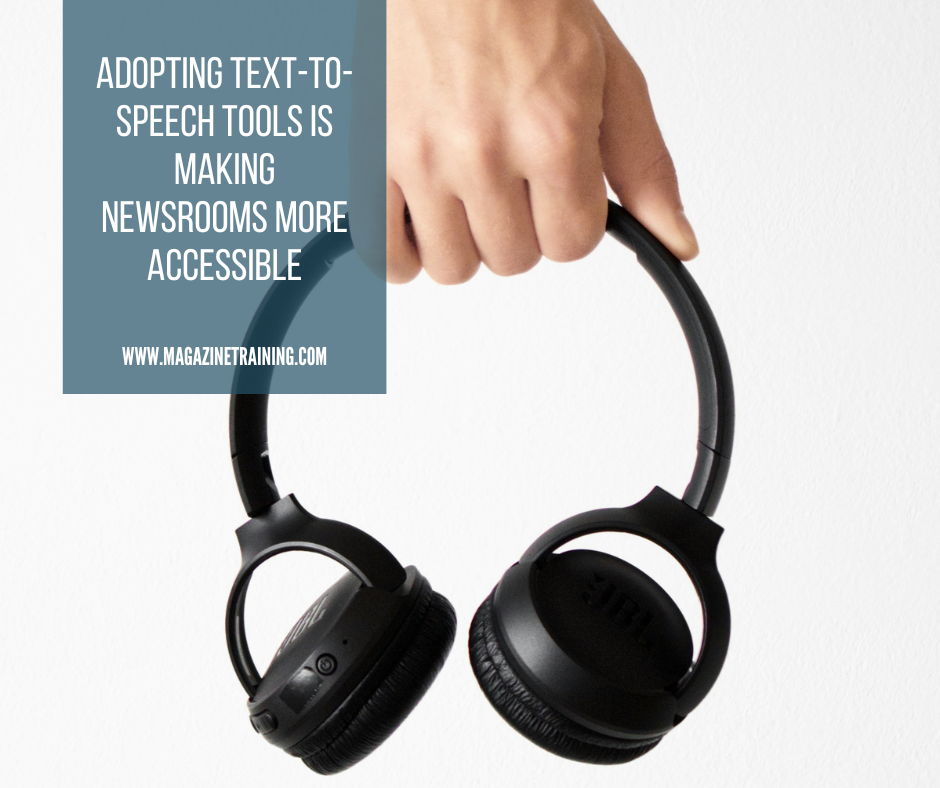
Media outlets are increasingly adopting text-to-speech tools to make their content more widely available.
Since 2015, Brazilian newspaper Folha de São Paulo has been providing text-to-speech features on its website. This has made it a pioneer among mainstream media. “At the beginning, [the newspaper] was available only on desktop. Later, we also made it available on mobile,” said Camila Marques, who leads digital strategy for the outlet.
The newspaper’s team took into account both usability and accessibility when implementing the tool, explained Marques.
“This was an interesting, innovative feature for the average reader. The audio accessibility came along with the visual accessibility, as we also implemented controls for changing font size,” she said. “We not only thought about people with impaired vision being able to listen to the text, but also about users with other issues. This is what informs our website code, and also the choices for the site’s color palette. For example, we address both impaired vision and color blindness.”
Image description
Journalist Gustavo Torniero was born with cataracts and glaucoma. Alongside his reporting, he works as a consultant for inclusion, audio description and digital accessibility.
“I see content accessibility in a broader way. When you have a website that’s accessible for someone with visual impairment, it’s also going to be accessible for people who may only use a keyboard for browsing the internet, for instance someone with a physical disability,” said Torniero. “I always say that I’m blind, or a person with blindness. [The latter is] a very interesting way to phrase it, because it puts the person first.”
To assess text-to-speech tools, Torniero draws on his personal and professional experience. “[The tools] are an additional resource to increase accessibility for people with low literacy, people with dyslexia or with other kinds of learning disabilities. People with visual impairments can benefit from these tools, though they usually already have a screen reader software. Using features provided by a media outlet enhances convenience.
But Torniero pointed to a persisting problem today: “One of the main hurdles for accessibility in digital content is the lack of image descriptions.”
This is something the team at Folha de São Paulo has sought to improve. “We have been working on an experiment to create the right format to better and automatically describe images and graphics, so there are no images left without descriptive metadata,” said Marques. “Currently, we depend on journalists to enter this data, so a lot of information slips through.”
Torniero believes better representation in newsrooms will help enhance accessibility: “There’s a series of systemic issues in the news industry, especially in legacy media. The lack of representation of people with disabilities in newsrooms, for example, directly affects the content created about this issue.”
Have news sites become one big podcast?
IJNet offers a text-to-speech feature on most of its language sites. You’ll notice, an audio version of this story is available at the top of the page.
The provider for this service is Ad Auris, which currently has 200 clients worldwide. “We are increasingly working with content marketing teams and newsletter writers,” said Tina Haertel, co-founder of the Canadian company.
by Fabiana Santos, International Journalists’ Network
Photo by Adrian Regeci on Unsplash
Related posts
Magazine Training International’s mission is to encourage, strengthen, and provide training and resources to Christian magazine publishers as they seek to build the church and reach their societies for Christ.

